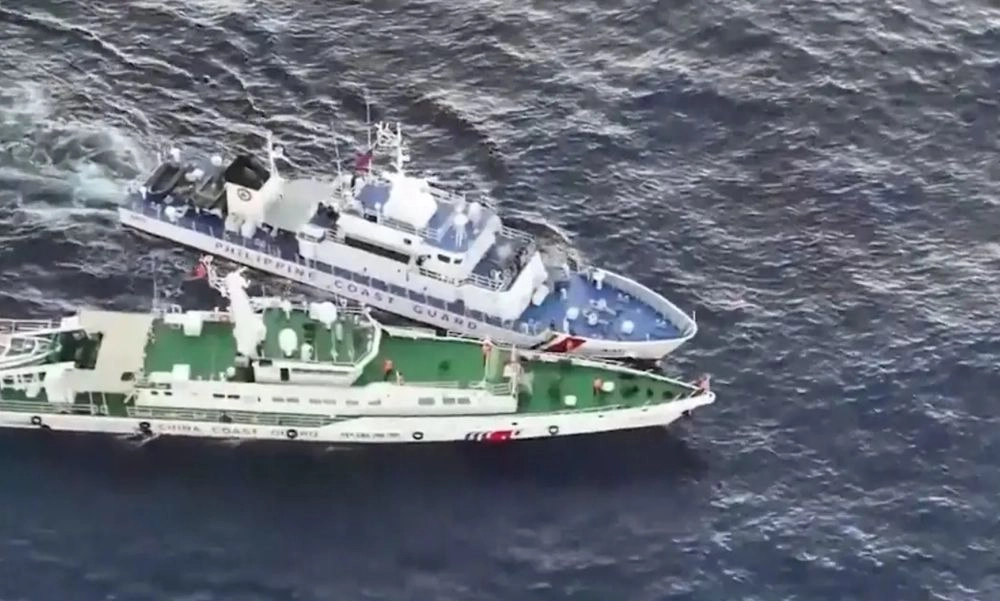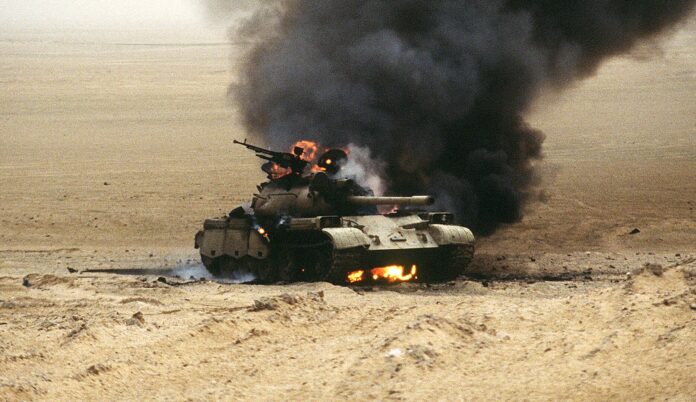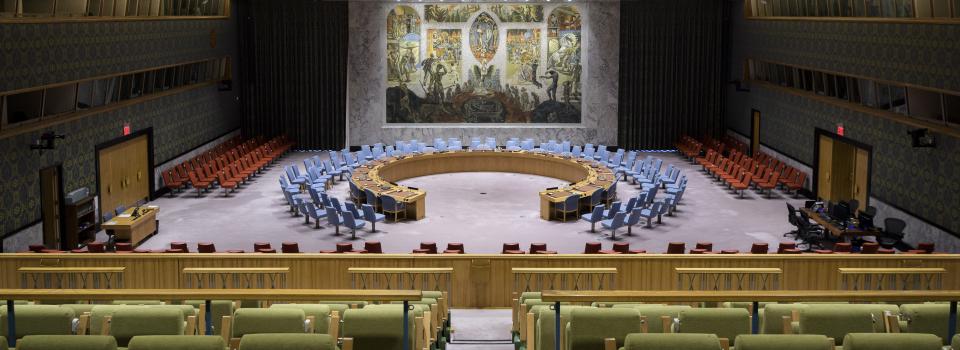Headline: The moment of friction. – 36th Parallel Assessments
In strategic studies “friction” is a term that it is used to describe the moment when military action encounters adversary resistance. “Friction” is one of four (along with an unofficial fifth) “F’s” in military strategy, which includes force (kinetic mass), fluidity (of manoeuvre), fog (of battle) as well as uncertainty (of outcomes, which is usually referred to in military circles as the “oh F**k” factor)). Friction comes from many causes, including terrain, countervailing force, psychological factors, the adversary’s broader capabilities and more. As German strategist Karl von Clausewitz noted, friction can be encountered at the three levels of warfare: strategic, operational and tactical.In other words, “Clausewitzian friction” is not just confined to the battlefield.
The notion of friction is drawn from the physical world and has many permutations. It is not confined to one particular element or dimension. It is about opposition, even if of similar elements or forces, including the element of will. For example, when they meet, fluids and air of different weights create turbulence. Fire on different fire extinguishes or expands. Earth on earth leads to crumbling or inertial momentum. The product of the combination of these physical forces, say fluid on air or earth or fire, depends on the relative weight of each. The same goes for psychological factors in human contests. Mutatis mutandis (i.e., with the necessary changes having been made), this is applicable to international relations. It may seem like a conceptual stretch but I see the use of the notion of friction in terms of international relations more as an example of conceptual transfer, using Clausewitz as a bridge between the physical and the political/diplomatic worlds (more on this later).
In the past I have written at length about the systemic realignment and long transition in post Cold War international relations. The phrase refers to the transition from a unipolar post-Cold War international system dominated by the US (as the “hegemon” of the liberal internationalist world order) to a multipolar system that includes rising Great Powers like the PRC and India and constellations of middle powers such as the other BRIC countries (Brazil, Russia, South Africa and recently added members like Egypt, Iran, Saudi Arabia, the UAE, Ethiopia and perhaps Argentina (if it ratifies its accession)) as representatives of the rising “Global South.” In spite of their differences, these rising power blocs are counterpoised against what remains of the liberal institutionalist order, including the EU, Japan, South Korea and Australia. I have noted that the long moment of transition is characterised by international norm erosion and increased rule violations and the consequent emergence of conflict as the systems regulator until a new status quo is established (and from which that new status quo emerges). That conflict may come in many guises–economic, diplomatic, cultural and, perhaps inevitably, military or some combination thereof. When conflicts turn military, the moment of force has arrived. And when force is met by opposing force, then friction is inevitable.
Here I extend the notion of friction to include the international moment that we are currently living in. That is, I have conceptually transferred the notion of friction to the international arena because “transfer” in this instance means applying the notion of friction to a wider environment beyond the physical plane without distorting its original meaning. That allows me to avoid the methodologically dubious practice of conceptual stretching (where a term is stretched and distorted from its original meaning in order to analytically fit a different type of thing).
The long transitional moment is what has taken us to this point and allowed me to undertake the transfer, and it is here in the transitional trajectory from unipolar to multipolar international systems where the future global status quo will be defined. It is a decisive moment because it is the period where force has become the major arbiter of who rises and who falls in the systemic transitional shuffle. Given that there are many competitors in the international arena who are capable and willing to use force as well as other means to advance their interests, I suggest that the global community has reached its moment of friction, that is, the turning point in the long transitional process. Everything that has come before was the lead-in. Everything that comes after will be the result of this conflict-defined moment.
It is no exaggeration to write this. Besides the Ruso-Ukrainian war and the Israel-Hamas war, there is the armed stand-off in the Red Sea between Iran-backed Houthis and a naval coalition led but he US, the ongoing skirmishes between PRC naval forces and those of the Philippines, Vietnam and Western naval forces as well as the PRC military threats to Taiwan, the Israeli-Hezbollah conflict along the Israel-Lebanon border, Islamist violence in the Sahel and Eastern Africa as well as in Russia, Afghanistan, Pakistan and other other parts of Central Asia, ongoing conflict in Syria between Assad’s Russian-backed forces, the remnants of ISIS and Western-backed rebels, the Turkish-Kurd conflict along the Turkish, Syrian and Iraqi borders, the civil war in Libya, escalating fighting between the Democratic Republic of Congo and Rwanda over mineral rich areas in and around the eastern Congolese city of Goma (in which private military companies and irredentist militias are also involved), narco-violence in Latin America that has reached the level of challenging state monopolies over organised violence in places like Ecuador and parts of Mexico, piracy in the Indian Ocean and in the Malacca Straits, cross-border ethno-religious conflict in Afghanistan and Pakistan, ethnic cleansing in Myanmar, the PRC and Gaza, tribal conflict in Papua New Guinea and more. Norms and rules governing interstate as well as domestic forms of collective behaviour are honoured in the breach, not as a matter of course. Individuals, groups and States are increasingly atomised in their perspectives and interactions and resort to the ultimate default option–conflict–to pursue their interests in the face of other’s opposition.
 Phillipines and PRC Coast Guard Ships clash in South China Sea. Source: UNN.
Phillipines and PRC Coast Guard Ships clash in South China Sea. Source: UNN.
Friction extends to economics. The era of globalisation of free trade has ended as nations revert to post-pandemic protectionism or focus on “near-“and “friend-shoring” in order to avoid supply chain bottlenecks resultant from commodity production concentration in a small number of countries. Although not a trade pact strictly speaking, the PRC Belt and Road Initiative undermines Western trade agreements like the TPPA and lesser regional arrangements because it ties developmental assistance and financing to Chinese industries and markets. Intellectual property and technology theft is wide-spread despite International conventions against them (endnote just by the PRC). The era of Bretton Woods is over and the agencies that were its institutional pillars (like the World Bank, IMF and regional agencies such as the IADB and ADB) are now increasingly challenged by entities emerging from the Global South like the China Development Bank and BRICS common market initiatives.
In addition, as part of international norms erosion and rules violations, many diplomatic agreements and treaties such as those prohibiting the use of chemical weapons and even genocide are also now largely ignored because, in the end, there is no international enforcement capability to reinforce what is written. The International Court of Justice and International Criminal Court can impose sanctions and issue arrest warrants but have no enforcement authority of their own. The UN can authorise peace-keeping missions and issue resolutions but is subject to Security Council vetoes on the one hand and belligerent non-compliance in the other (besides Israel ignoring UN demands for a cease-fire and humanitarian pauses in Gaza, people may forget that there are UN peace keeping missions in the Sinai, Golan Heights and Israel-Lebanon border, including NZDF personnel among them, because these “blue helmet” missions have had no ameliorating impact on the behaviour of the participants in the Israel-Hamas-Hezbollah-Syria conflict). Adverse rulings in international courts have not stopped the PRC island-building and aggressive military diplomacy in the South China Sea. The examples are many. Given that state of affairs, States and other actors increasingly turn to force to pursue their interests.
Whatever restraint was promoted by the laws of war and international conflict-resolution institutions during the post-Cold War interregnum has been abandoned or become exceptions to the new anarchic rule. One might even say that the international community is increasingly living in a state of nature, even if the terms “anarchy” and “state of nature” are loose interpretations of what Hobbes wrote about when he considered the Leviathan of international politics. But the basic idea should be clear: the liberal internationalist system has broken down and a new order is emerging from the conflict landscape that characterises the contemporary international arena.
Again, the friction is not just things like the military confrontations between Russia, Russian and Iranian-backed proxies in the Middle East and the PRC against a range of Western and Western-oriented nations in the Western Pacific. The BRICS have proposed to develop a single unitary currency to rival the Euro and are openly calling for a major overhaul of international organizations and institutions that they (rightfully so), see as made by and for post-colonial Western interests. But the question is whether what they have in mind as a replacement will be any better in addressing the needs of the Global South while respecting the autonomy of the Global North. My hunch is that it will not, and will just add another front to the moment of friction.
Empty UN Security Council Chamber. Source: United Nations.
I shall not continue enunciating the reasons why I believe that we have arrived at an international moment of friction (e.g. cultural degradation and social vulgarisation, etc.). That is because I cannot specify what will be come given that push has now led to shove, nor can I offer a solution set to the problems embedded in and underwriting this sorry moment. What I can say is, just like the fact that we need to learn to embrace uncertainty in the transitional process since outcomes are not assured and guarantees cannot be offered (although some industries like tobacco, liquor, weapons and insurance all profit during times of uncertainty and market hedging strategies become the common response of risk-adverse actors to uncertain economic times, so can be calculated or anticipated), so too we must, if not embrace, then learn to prepare for an era in which friction will be the dominant mode of international transaction for some time to come.
For small countries like NZ, repeating empty mantras about foreign policy “independence” no longer cuts it even as a slogan. The moment of international friction poses some existential questions about where NZ stands in the transitional process, how it will balance competing international interests when it comes to NZ foreign and security policy, and about who to side with when conflict comes.
Because it will.
Analysis syndicated by 36th Parallel Assessments –









